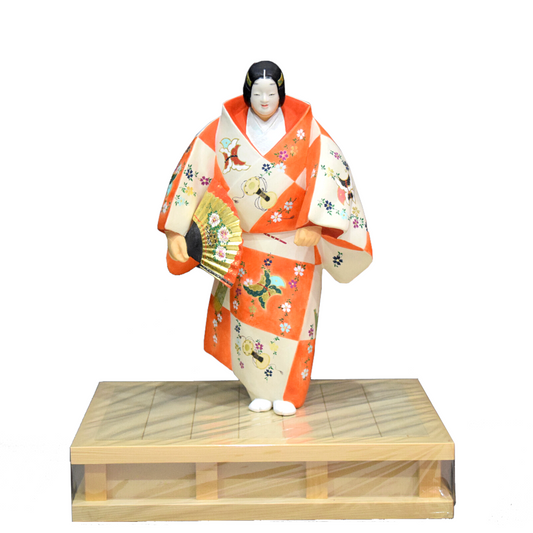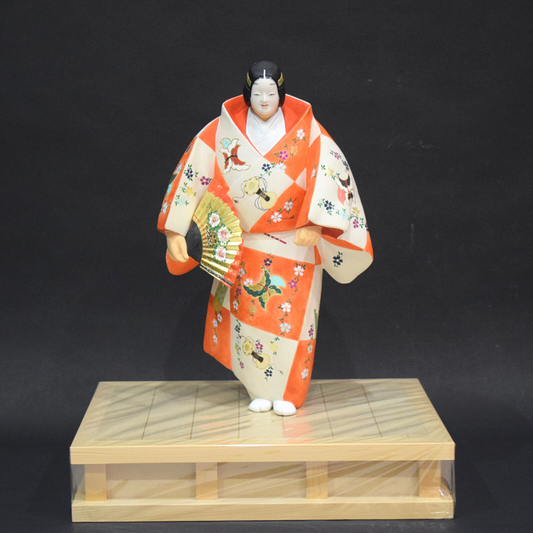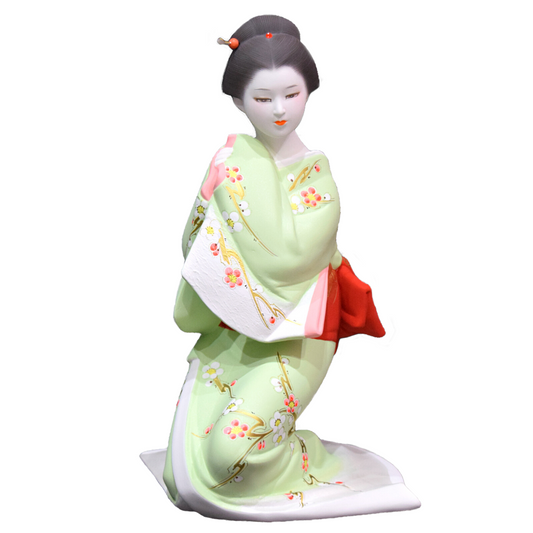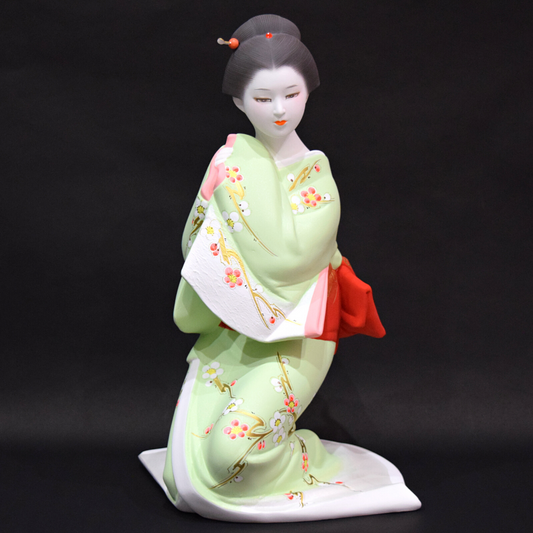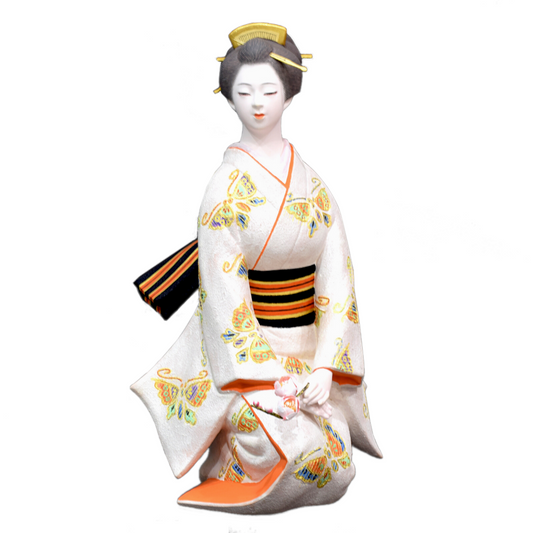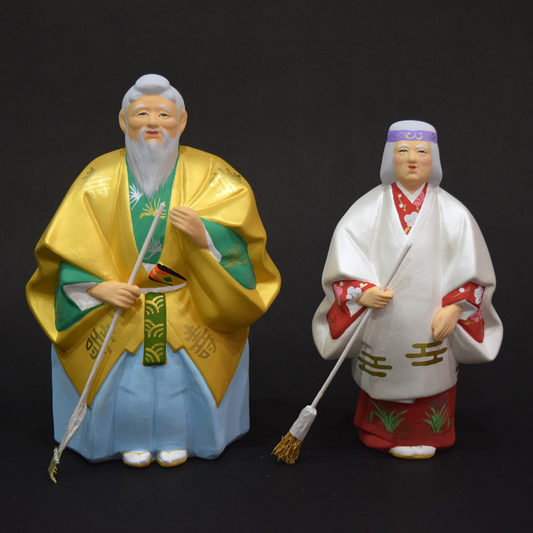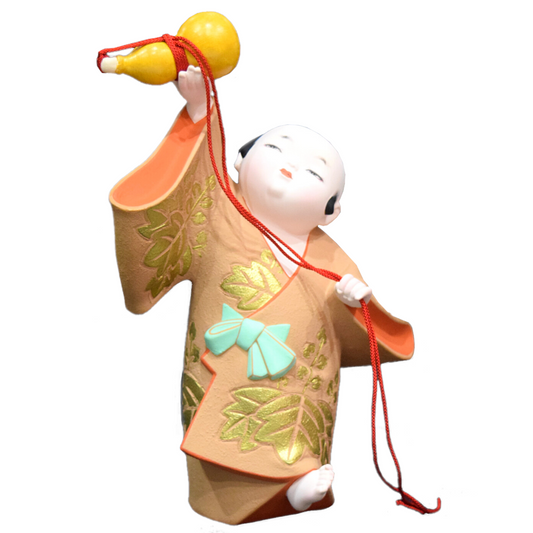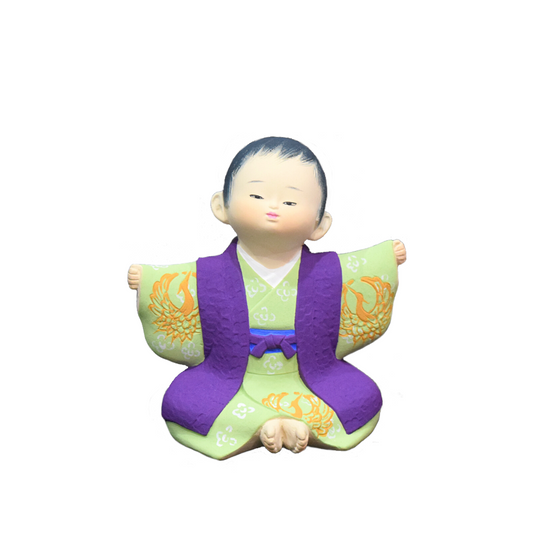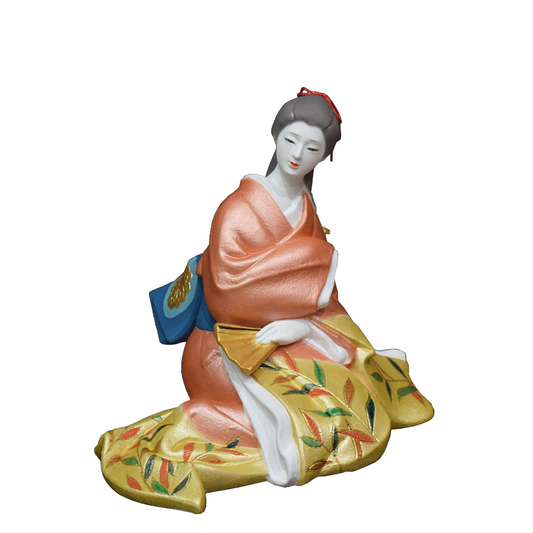About Hakata Dolls
【Traditional Crafts Representing Hakata】
- Hakata dolls are a traditional craft representing Hakata. The traditional beauty and craftsmanship that have been passed down from generation to generation over the years continue to fascinate people today.
- The decorations for the decorative Yamakasa and Kaki-Yamakasa floats of the Hakata Gion Yamakasa festival are made by Hakata doll makers. The elegant and gorgeous female statues, dynamic warrior dolls, and other Yamakasa decorations delight the eyes of many people every year.
- Did you know that Hakata dolls are displayed in the U.S. White House and were presented to President Gorbachev of the former Soviet Union and former French President Jacques Chirac? Hakata dolls have crossed oceans to share the beauty of Japan with the world.
- The origin of Hakata dolls can be traced back to 1600, more than 400 years ago, when Nagamasa Kuroda entered Chikuzen. Nagamasa gathered many craftsmen from Banshu, Nakatsu, and Najima to build Fukuoka Castle, and it is said that one of the roots of Hakata dolls dates back to when tile makers made unglazed dolls out of clay.
- In the latter half of the Edo period, master craftsmen such as Soshichi Masaki and Kichibei Nakanoko became active, and Hakata doll making boomed and became known throughout the country.
- In 1900 during the Meiji period, master craftsman Yoichi Kojima's Hakata dolls were exhibited at the World Exposition in Paris and received high acclaim from around the world, spreading the fame of Hakata dolls internationally.
- Hakata dolls are unique in their meticulous carving and subdued coloring. Each dollmaker's skill is expressed in the facial features of the dolls. The face of a unglazed doll has a unique character that is expressed when the artist puts the soul into the doll by applying brush strokes to the eyes, eyebrows, and lips.
- Hakata dolls, which are called the ultimate in unglazed dolls, are categorized into Beauty dolls, Samurai dolls, Kabuki dolls, Noh dolls, Children dolls, Modern dolls, and so on. The most representative of these are the Beauty dolls, whose breathtaking elegance and gorgeousness attracts the attention of the people around them.
- Other popular types of dolls include samurai dolls that express the bravery of the Kuroda Bushi(warriors), Kabuki dolls that show the splendor of Kabuki, and Children dolls that convey the warmth and warmth of Hakata dolls.
Categories of Hakata dolls
【Female Hakata dolls (“Bijinmono”)】
- The most representative type of Hakata doll is the Bijimono (female Hakata doll), which is made in the motif of elegance and gorgeousness. Bijinmono can be roughly classified into two types: sitting and standing.
- Traditional beauty of the gorgeous Hakata ningyo Bijinmono will surely fascinate those around you with their breathtakingly gorgeous appearance.
- Male Hakata dolls are full of various forms and beauty, including samurai (Kuroda Samurai) dolls that express bravery and strength, Kabuki dolls that show the gorgeousness of Kabuki theater, and Noh dolls that represent the ethereal world where stillness and movement coexist.
- Among Hakata dolls, male dolls in particular are like a kaleidoscope, depicting powerful male figures in a variety of scenes in a glittering manner.
- Other categories of Hakata dolls include children's dolls, which convey warmth and warmth, hina dolls for celebrating the coming of spring, good luck dolls to pray for good health and prosperous business, seasonal dolls to wish for healthy growth, and sports dolls in the form of sumo and kendo, traditional Japanese sports. These various types of Hakata dolls, which are the crystallization of traditional Japanese culture, richly express the world.
About Traditional Crafts

- Hakata dolls are designated as traditional crafts under the following "Densan Law".
- Traditional handicrafts" defined by the "Act concerning the Promotion of the Traditional Craft Industries" (abbreviated as "Densan Law") are those that require skilled craftsmanship and have artistic elements, and require the following four elements.
- Mainly used for daily life
- The main part of the manufacturing process is handicraft
- Manufactured by traditional techniques or techniques
- Traditionally used raw materials
The seal of traditional crafts is a sign of authenticity.
- Hakata dolls with this seal are authentic proof of "Traditional Hakata Dolls" designated by the Minister of Economy, Trade and Industry.
- All products we sell have this seal.

How to handle Hakata dolls
- Please display Hakata dolls out of direct sunlight.
- Do not handle Hakata dolls with bare hands, but handle them while holding them against a cloth or paper.
- Please remove dust from the doll by gently brushing it off with a clean brush.
- Do not wipe with a wet cloth.
Showing 33 of 33 products








